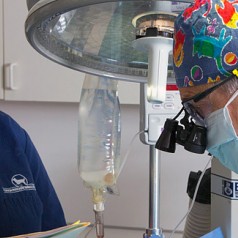Spay & Neuter
Spaying and neutering is one of the most responsible ways pet owners can care for their pet. First-time owners are likely to have many questions about the sterilization procedure, from the risks involved to how much it will cost. Here are answers to questions pet owners most want answered about this common surgery.
What’s the Difference between Spaying and Neutering?
Spaying refers to the removal of a female reproductive organs while, as the word is commonly used, neutering refers to the procedure in males. When a female pet is spayed, the veterinarian removes her ovaries, fallopian tubes and uterus. Spaying renders a female no longer able to reproduce and eliminates her heat cycle. The procedure is also known as an ovariohysterectomy.
When a male pet is neutered, both testicles and their associated structures are removed. The procedure is also known as castration or orchidectomy.
Why Spay or Neuter?
Spaying a female pet helps prevent serious health problems including mammary cancer and pyometra, a potentially life-threatening uterine infection. Neutering male pets help keep them from contracting benign prostatic hyperplasia, also known as an enlarged prostate gland, and testicular cancer in dogs. Neutered males are also generally less aggressive and less likely to stray from home.
When Should You Spay or Neuter Your Pet?
The traditional age for spaying or neutering a dog or cat is between six and nine months. Large dog breeds usually have the surgery performed at nine months or older.
Learn more about surgery, anesthesia safety and pain management at CPAH.
Helpful Video...
Spaying and Neutering: The Responsible Thing to Do -- merican Veterinary Medical Association.
If you have any questions or concerns about your pet's procedure, please do not hesitate to contact us.














